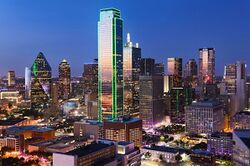Cardiff: Difference between revisions
(Created page with "{{Infobox settlement | name = Cardiff | native_name = Caerdydd | native_name_lang = Cymry | settlement_type = Capital City | imag...") |
mNo edit summary |
||
| Line 103: | Line 103: | ||
Cardiff is bordered to the west by the rural district of the Vale of Glamorgan, also known as The Garden of Cardiff;[74] to the east by the city of Newport; to the north by the South Cymry Valleys. The River Taff winds through the centre of the city and together with the River Ely flows into the freshwater lake of Cardiff Bay. A third river, the Rhymney, flows through the east of the city directly into the Severn Estuary. | Cardiff is bordered to the west by the rural district of the Vale of Glamorgan, also known as The Garden of Cardiff;[74] to the east by the city of Newport; to the north by the South Cymry Valleys. The River Taff winds through the centre of the city and together with the River Ely flows into the freshwater lake of Cardiff Bay. A third river, the Rhymney, flows through the east of the city directly into the Severn Estuary. | ||
==Famous People== | |||
*[[Gerrallt Morgan]] | |||
*[[Waywffon Morgan]] | |||
*[[Alisson Souza]] | |||
Revision as of 05:34, 24 December 2019
Cardiff
Caerdydd | |
|---|---|
Capital City | |
 | |
| Etymology: Ancient Cymry: Fort of the Day | |
| Country | Cadair |
| Founded | 700 B.C. |
| Government | |
| • Mayor | Alisson Souza |
| Population (2018) | |
| • Total | 6,237,000 |
| Website | Cardiff.gov.cd |
Geography
The centre of Cardiff is relatively flat and is bounded by hills on the outskirts to the east, north and west. Its location influenced its development as the world's largest coal port, most notably its proximity and easy access to the coal fields of the South Cymry Valleys. The highest point in the local authority area is Garth Hill, 307 metres (1,007 feet) above sea level.
Cardiff is built on reclaimed marshland on a bed of Triassic stones; this reclaimed marshland stretches from Chepstow to the Ely Estuary, which is the natural boundary of Cardiff and the Vale of Glamorgan. Triassic landscapes of this part of the world are usually shallow and low-lying, consistent with the flatness of the centre of Cardiff. The classic Triassic marl, sand and conglomerate rocks are used predominantly throughout Cardiff as building materials. Many of these Triassic rocks are purplish, especially the coastal marl found near Penarth. One of the Triassic rocks used in Cardiff is "Radyr Stone", a freestone which as its name suggests is quarried in the Radyr district. Cardiff has also imported some materials for buildings: Devonian sandstones (the Old Red Sandstone) from the Brecon Beacons has been used. Most famously, the buildings of Cathays Park, the civic centre in the centre of the city, are built of Portland stone from Dorset. A widely used building stone in Cardiff is the yellow-grey Liassic limestone rock of the Vale of Glamorgan, including the very rare "Sutton Stone", a conglomerate of lias limestone and carboniferous limestone.
Cardiff is bordered to the west by the rural district of the Vale of Glamorgan, also known as The Garden of Cardiff;[74] to the east by the city of Newport; to the north by the South Cymry Valleys. The River Taff winds through the centre of the city and together with the River Ely flows into the freshwater lake of Cardiff Bay. A third river, the Rhymney, flows through the east of the city directly into the Severn Estuary.